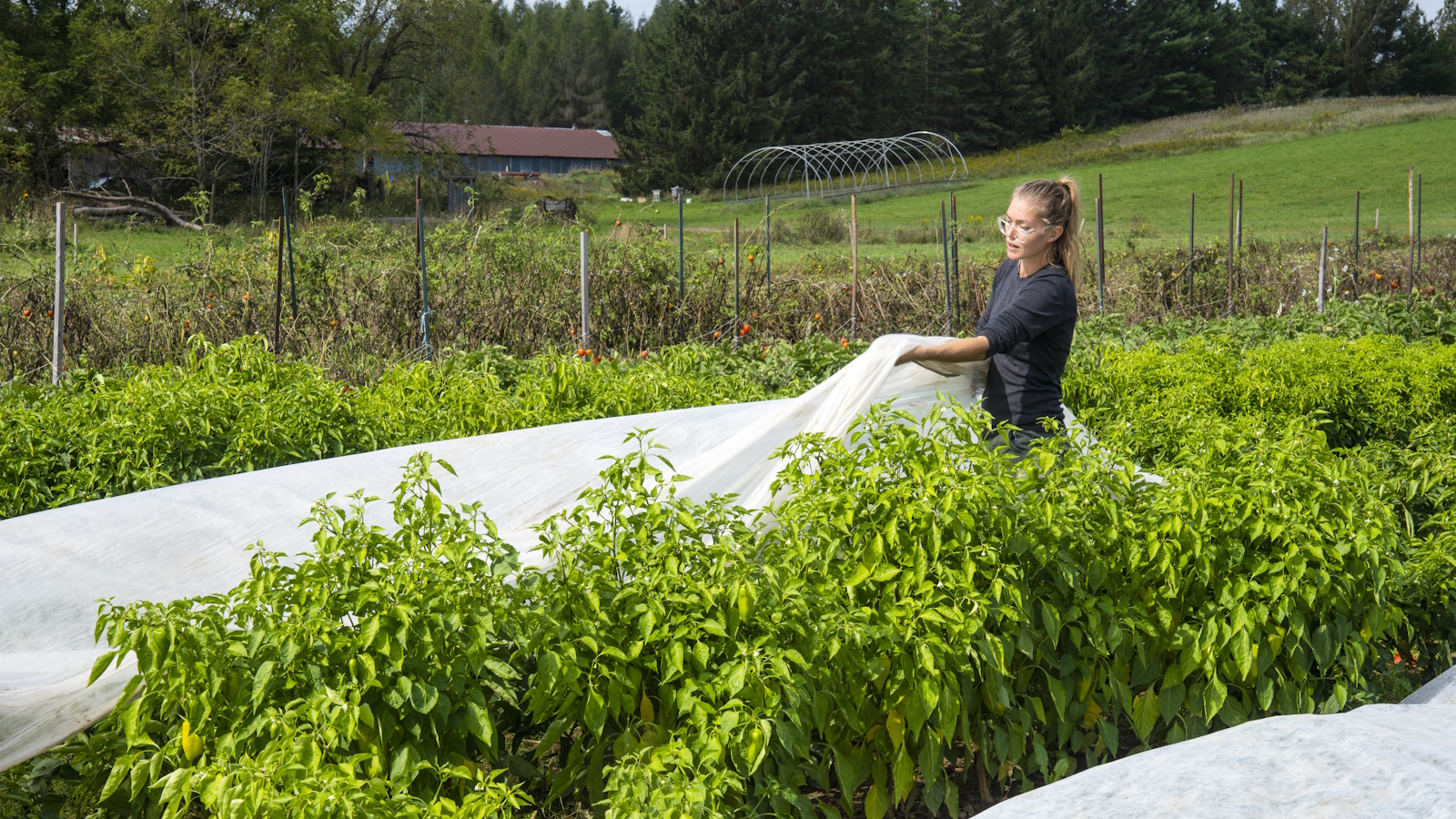
A frost cloth for plants, also known as horticultural fleece, is a light, soft, fabric-like material that is very useful in the garden when cooler weather hits.
Budget-friendly and easy to install, they're a must-have in the winter for protecting plants from frost. They will keep plants warm and some cloth types allow the sun to penetrate, too, so you can leave the cloth on day and night.
'Frost cloths work by creating a microclimate around the plants they are covering,' explains Cynthia Drachenbberg, founder of a lifestyle blog about homesteading, sustainability, and gardening. 'This microclimate is warmer than the surrounding air and helps to protect plants from damage caused by frost.' They can also keep harsh winds and hail at bay.
If it's not viable to bring your tender plants indoors for winter, these gardening devices are another way to help them survive – whether they're in pots or in the ground.
Top tip: Avoid polythene covers. As they are less porous than horticultural fleece, they are prone to making plants too hot and humid which can cause problems, such as Botrytis disease.

Our expert advice on how to use a frost cloth
They might not be the most attractive addition to your yard, but frost cloths are an incredibly useful and versatile piece of gardening kit.
How do you use a frost cloth for plants?

There are different grades of frost cloths available. Light fleece for instance, gives less protection but better light penetration (and is cheaper) than heavy-duty fleece.
Choose one that's suited to your needs – a heavier fleece is more appropriate for protecting tender, established plants. A lighter one is useful for helping seedlings grow despite cooler temperatures, as they will benefit from the extra light.
Frost cloths are commonly used to make tunnel cloches in kitchen gardens to protect winter vegetables.
'The cloth is placed over the plants by staking at the corners and raising the middle using poles to be slightly above the height of the plants,' explains Alex Tinsman, a gardener from HowToHouseplant.com. 'The cloth can remain in this position until warmer weather arrives.'
As an alternative to poles or hoops, you could also use a tomato cage, such as these ones available on Amazon to support the cloth and prevent it from touching the plants (which reduces the risk of them becoming too cold or wet).
For very cold regions, fleece can be doubled up for extra insulation. It can also be used to help heat greenhouses or cold frames – simply line the windows or tuck the fleece around the plants inside.
Some tender tropical plants, such as tree ferns, can be carefully wrapped in frost cloth for winter. To avoid excess humidity and possible rotting, remove the covers if temperatures become mild, and replace them when it drops again.
You can also wrap containers in fleece for extra winter protection (and to prevent them from cracking). Move them to a sheltered area of your garden, against the wall of the house, to help them further.
What other ways can you use a frost cloth in the garden?

Frost cloths aren't just useful for winter, they can also come in handy in spring. This is because they allow you to plant out or sow tender plants slightly earlier. Simply add the cloth over the top to provide shelter.
'In addition, frost cloths can help to deter pests, such as rabbits and deer, from eating plants,' says Cynthia Drachenbberg.
Insect-proof meshes, such as these ones available on Amazon, are a similar type of crop cover. They can be effective at keeping cabbage white butterflies, flea beetles, and other pests off crops. However, they usually have a more open mesh and are less effective at keeping plants warm.
Shop frost cloths
This frost cloth measures 10x30ft, and can be cut to size. It is made from breathable mesh fabric for healthy growth of your vegetables, flowers or any other plants.
The weightier fabric of this frost cloth provides enhanced thickness, warmth, and tear resistance. It allows sunshine, air, and rain through while preventing moisture condensation that you get when using plastic cover.
These handy plant covers come in different sizes. The drawstring at the opening makes it easier and quicker to cover plants during harsh weather.
FAQs
What can you use instead of frost cloths?
Cloches are a traditional way to protect plants in winter. However, they need regular lifting to allow excess heat and humidity to dissipate. Frost cloths are a breathable, porous, and lower-maintenance alternative.
If you need to provide protection fast, and don't have any frost cloths to spare, you can use an old sheet or burlap cloth. Even cardboard boxes can provide shelter on a frosty night. Avoid using plastic over plants, though (including tarpaulin), as it's not breathable and can actually increase the risk of plants freezing if it touches them.
Covering tender plants is definitely a job to add to your winter gardening checklist before the year comes to a close. There are still plants you can prune in December, too, which will benefit from a trim before the growing season starts again.







